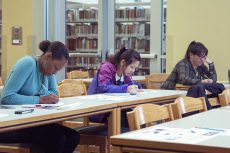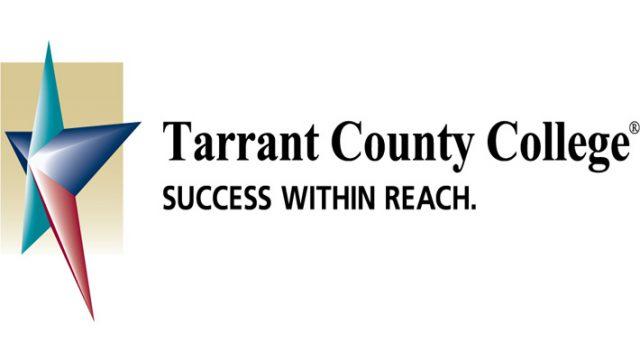By Anne Francomano/ tr news editor

Photos by Scott Hughes/The Collegian
Comic strip art is less about style and more about the message artists are trying to convey, an art historian told SE students and faculty at the Your Life in Comics: Incorporating Autobiography into Newspaper Comics workshop March 1.
El Centro College art faculty member Josh Rose conducted a hands-on workshop about creating comics by taking something banal from personal experience and turning it into something absurd.
“Find inspiration in the ordinary,” he said. “Slice of life is still something we continue to draw humor from.”
Rose shared examples of his semi-autobiographical Cosmo comic strip, which was based on fictionalized versions of himself and his friends, noting specific elements he had included and why. While one single-panel strip, where Cosmo had found a giant, talking cockroach in his bathtub, exaggerated a real-life situation, another showed his main character using a time machine.
“I wasn’t always just pulling from life but also let flights of fancy take over,” he said.

Rose credited newspaper comic strips with setting him on a path of art, writing and literature.
“I always loved the weekly comics a little bit more when I could come back to them and follow a serialized story,” he said.
Rose advised participants to consider and be up front about who and what inspired them.
“Every comic strip has its influences,” he said. “This is also true of any art.”
Bloom County by Berkeley Breathed was a major influence on Rose’s work. He noted that while Breathed handled various topics, there was always a sense of something personal Breathed had included in his work. At times, Rose adopted Breathed’s technique of setting up a joke with a main punchline, followed by a secondary, unnecessary punchline.
“It was the secondary punchline that actually relayed how the humor was about the characters’ interactions, and we are not just watching actors on a stage,” he said.

In the hands-on segment, Rose discussed planning and introduced common artist tools, such as bristol boards, non-photo blue pencils and sketching dip-pens.
“Usually, planning ideas for a strip would come to me when I was walking or doing something else, letting my mind roam,” he said. “Planning where word balloons go is critical. It’s important to direct the eye and make it visually interesting.”
Even though formal comic art programs exist today, there is still a stigma attached to comics, something which Rose hopes will continue to lessen with time.
“I don’t believe in high or low art. I just believe in art,” he said. “In my lectures, I discuss artists from Greek paintings to Marvel Comics. It’s a great age to be a cartoonist. It’s so easy to get your work out there.”






























